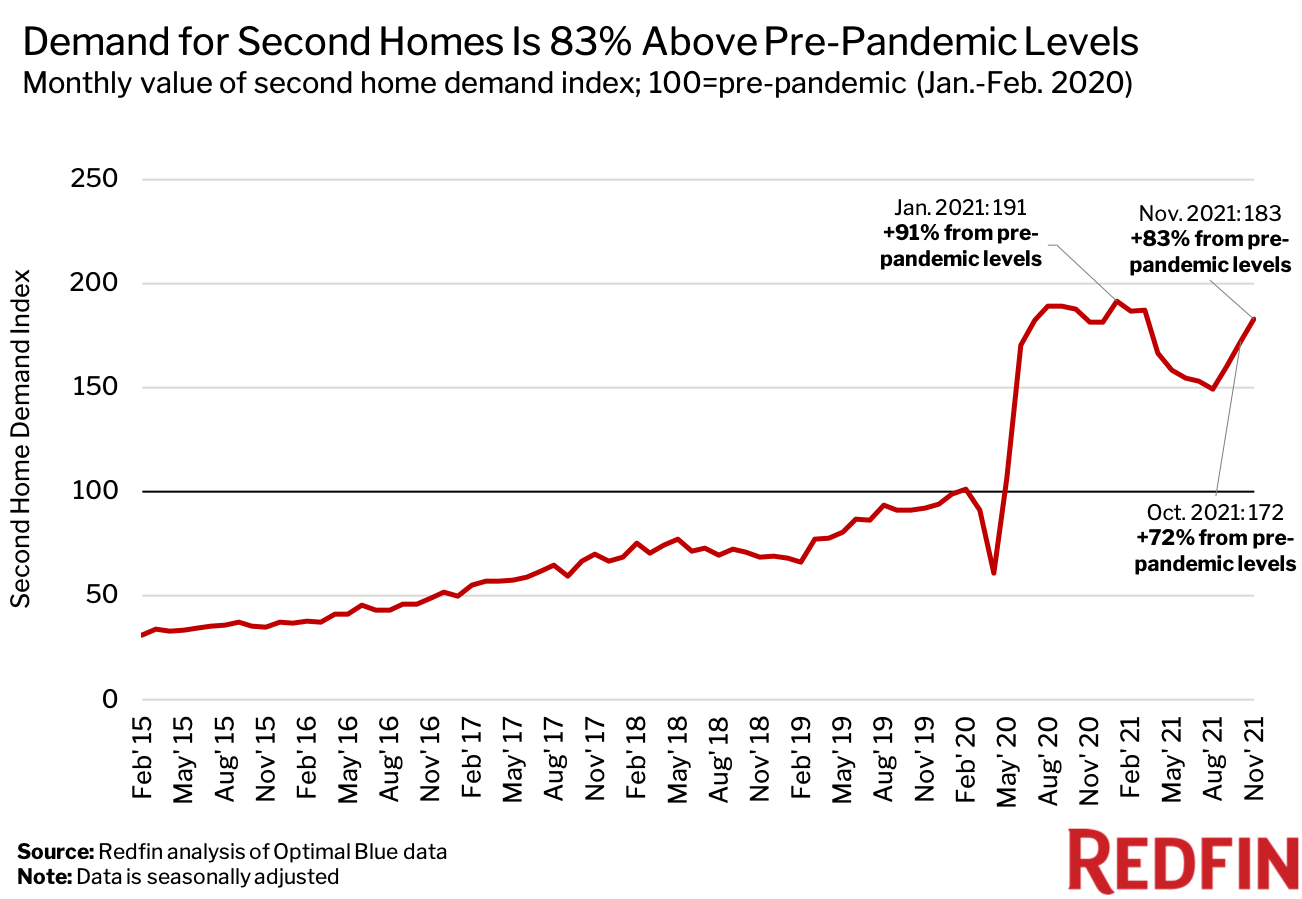In November, demand for second homes was up 83% from pre-pandemic levels, an uptick from October’s 72% increase but still slightly below January’s record 91% gain.

That’s according to a Redfin analysis of mortgage-rate lock data from real estate analytics firm Optimal Blue. Redfin created a seasonally-adjusted index of Optimal Blue’s data in order to adjust for typical seasonal patterns and allow for simple comparisons of second-home demand during and before the pandemic. We define “pre-pandemic” as January and February 2020 and set the index for that period to 100. Any data point above 100 represents second-home demand that’s above pre-pandemic levels and any data point below 100 represents demand below pre-pandemic levels. This data is subject to revision.
A mortgage-rate lock is an agreement between a homebuyer and a lender that allows the homebuyer to lock in an interest rate on a mortgage for a certain period of time, offering protection against future interest-rate hikes. Homebuyers must specify whether they are applying to secure a mortgage rate for a primary home, a second home or an investment property. Roughly 80% of mortgage-rate locks result in actual home purchases.
Demand for second homes surged as pandemic-related lockdowns and a new era of remote work made vacation destinations more desirable, with many wealthy Americans opting to exchange cramped city life for more space. But even as the overall housing market has begun its typical seasonal cooldown, demand is expected to remain above pre-pandemic levels.
“A combination of permanent remote-work policies and record-low mortgage rates is contributing to an uptick in demand, with buyers racing to snag vacation homes before interest rates increase further,” said Redfin Deputy Chief Economist Taylor Marr. “I expect demand for second homes to remain strong for at least the full duration of the pandemic, which is now being prolonged by the spread of the Omicron variant.”


